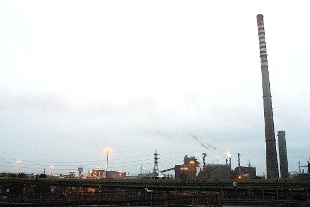- An industrial plan for the former Ilva. Conte in Taranto: our construction site will revive the city
- Arcelor Mittal: no agreement between parties on postponement, brief filed. Taranto, appeal on Afo2 shutdown
- Ex Ilva of Taranto, stop at blast furnace 2: the judge signs the extinguishing order
- Taranto, race against time for the ex Ilva plant
Share
07 January 2020 A very delicate week that begins for the workers of the former Ilva of Taranto. A protest began this morning by the USB workers Ilva in extraordinary administration who occupied the gates of the Taranto refinery located in the road link between the Ilva and the refinery, at the heavy vehicle gate.The protest arose as a result of the failure to finance the wage supplement for layoffs. Furthermore, the workers of the USB union "ask for the immediate convocation on the DL Taranto to discuss about the proposals that the USB union has presented".
Today the decision on the seizure of the blast furnace 2
But the main game today is played in the courtroom. Today the Court of Review of Taranto must rule on the appeal of Ilva in As against the decision of the judge Francesco Maccagnano to deny the extension of use of the Blast furnace 2 of the ArcelorMittal steel plant. In fact, the deadline for filing the order expires. The judges decided to take all the time available to evaluate the documentation and supplementary memorandum presented by the lawyers.
The plant was seized in June 2015 after the accident costing the life of Alessandro Morricella, 35 year old worker from Martina Franca hit by a blaze mixed with incandescent cast iron while measuring the casting temperature of the blast furnace.
The plant is considered essential for the steel industry's production cycle, which - if the appeal is rejected - would have an impact on employment and could affect the ongoing negotiations between the government and ArcelorMittal.
The appeal before the Review Court (Licci as chairman, Caroli as rapporteur, Lotito a latere) is also against another provision of the Maccagnano judge, that of ordering the judicial custodian to ensure that the plant was no longer used starting from last December 14th.
Up to now, for safety reasons, the plant has maintained a minimum production level of 4,800 tons per day. From 8 January, however, the plant changes that will be implemented, according to the timetable of the judicial custodian of the hot area Barbara Valenzano, "will not allow the subsequent resumption of the normal exercise of AFO2".
And on January 18, with the completion of the phase of lowering the blast furnace load, the "casting of the salamander" should begin, consisting of drilling the crucible and casting the last spindles.
The use of AFO2 remains central both in the industrial plan of ArcelorMittal and in the alternative plan of the government. According to judge Maccagnano, blast furnace 2 is still dangerous and the granting of an additional deadline to comply with the provisions would violate a "precautionary judgment".
Of different opinion are the lawyers Angelo Loreto and Filippo Dinacci, who on behalf of Ilva in As argued that, on the contrary, it takes more time to comply with the requirements (including the automation of the pouring field) and that other interventions of safety measures have already been carried out, so much so that no accidents have occurred in the area of the plant in these 4 and a half years. Ilva in As has already signed a contract with the Paul Wurth company to install some equipment (two capping machines and two drilling machines, and two cast iron temperature samplers).
The stop of AFO2, according to what has already been communicated by the multinational, would have as a consequence the recourse to extraordinary layoffs for 3,500 workers (including 1,273 for which the ordinary layoffs were extended for another 13 weeks on 30 December) . But the judges' decision will inevitably also have repercussions on the negotiations between the government and ArcelorMittal, which by January 31 will have to find a binding agreement for the revitalization of the Taranto steel sector.

